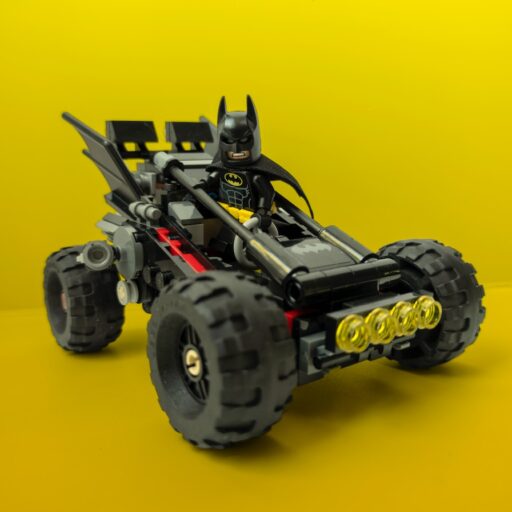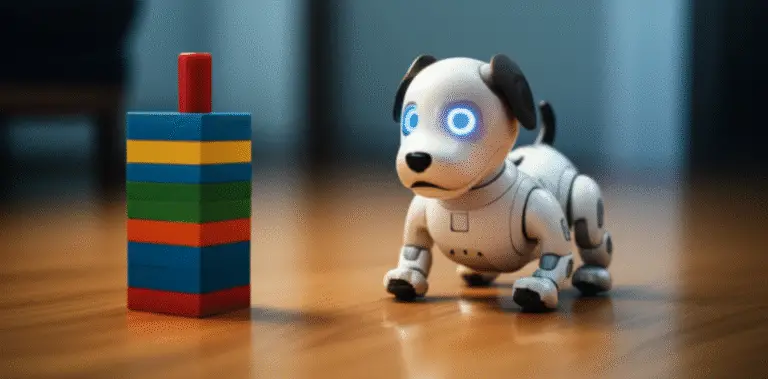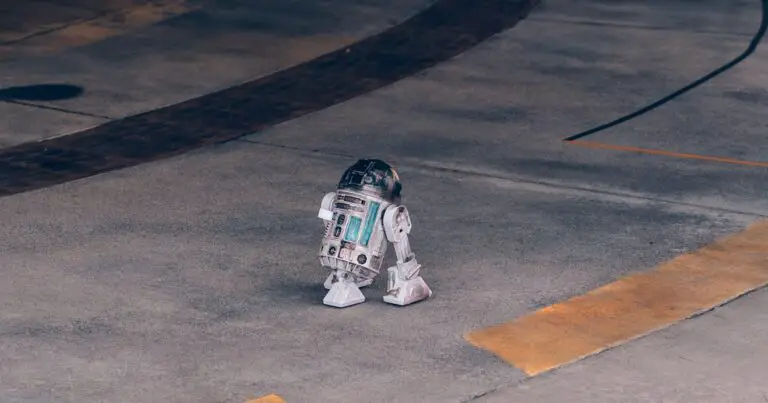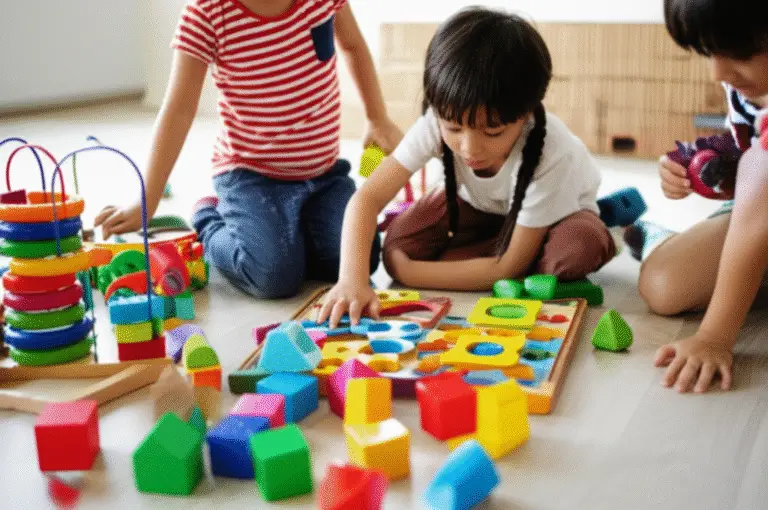Support our educational content for free when you purchase through links on our site. Learn more
How to Choose the Right Educational Toy for Your Child’s Age & Interests 🎯 (2025)
Choosing the perfect educational toy can feel like navigating a jungle of flashing lights, colorful boxes, and endless options. We’ve all been there—standing in the toy aisle wondering, “Will this really help my child learn, or just collect dust?” At Toy Brands™, we’ve cracked the code on matching toys to your child’s unique age, abilities, and passions. Did you know that the right educational toy can boost your child’s brain development by up to 40%?* Intrigued? Keep reading to discover our expert tips, age-by-age recommendations, and top brand picks that turn playtime into a learning adventure.
Later in this article, we’ll share our top 15 educational toys that have been tested and loved by kids and parents alike, plus smart strategies to elevate play and maximize learning. Whether you’re shopping for a curious toddler or a budding teen, we’ve got you covered!
Key Takeaways
- Match toys to your child’s developmental stage and interests for maximum engagement and learning.
- Age labels are safety guides, not strict rules—observe your child’s abilities and preferences.
- STEM, creative arts, and imaginative play toys each foster different skills; diversify playtime.
- Parental involvement boosts learning—join in and turn play into meaningful moments.
- Our expert picks include trusted brands like Melissa & Doug, LEGO Mindstorms, and VTech.
- Rotate toys regularly to keep curiosity alive and skills growing.
Ready to find the perfect educational toy? Explore our curated categories and start your smart shopping journey today:
*Source: Harvard University Center on the Developing Child
Table of Contents
- ⚡️ Quick Tips and Facts: Your Go-To Guide for Smart Toy Choices
- 📚 The Playful Past: A Brief History of Educational Toys and Learning Through Play
- 🤔 Why Educational Toys? Unlocking Your Child’s Potential and Fostering Development
- 🎯 The Perfect Match: How to Choose the Right Educational Toy for Your Child’s Age, Abilities, and Interests
- 👶 Age-Appropriate Play: What’s Developmentally Right for Every Stage?
- 0-12 Months: The World of Sensory Exploration and Early Discovery 🌈
- 1-2 Years Old: Toddler Adventures, First Words, and Motor Skill Milestones 🚀
- 2-3 Years Old: Preschool Power-Ups, Imaginative Leaps, and Social Skills 🎨
- 3-5 Years Old: Kindergarten Capers, Creative Construction, and Problem-Solving Fun 🏗️
- 5-7 Years Old: Early Elementary Explorers, Literacy, and STEM Skill Builders 🧠
- 7-9 Years Old: Junior Innovators, Strategic Thinkers, and Collaborative Play 💡
- 9-12 Years Old: Pre-Teen Prodigies, Advanced Concepts, and Critical Thinking 🔬
- 12+ Years Old: Teen Techies, Coding Adventures, and Complex Challenges 💻
- 💪 Beyond Age: Understanding Your Child’s Unique Abilities and Learning Styles
- Cognitive Development: Brain-Boosting Play for Problem Solving and Memory 🧩
- Fine Motor Skills: Dexterity, Hand-Eye Coordination, and Creative Expression ✍️
- Gross Motor Skills: Active Adventures, Balance, and Physical Development 🏃♀️
- Social-Emotional Growth: Friends, Feelings, Empathy, and Cooperative Play! 🤗
- Language Development: Words, Wonders, Whimsy, and Communication Skills 🗣️
- 💖 Sparking Joy: Tapping into Your Child’s Interests and Passions
- The Little Scientist: STEM Toys for Curious Minds and Future Innovators 🧪
- The Budding Artist: Creative Kits, Crafty Creations, and Imaginative Art 🖌️
- The Future Engineer: Building Blocks, Construction Challenges, and Design Thinking ⚙️
- The Storyteller: Imaginative Play, Role-Playing Adventures, and Narrative Skills 🎭
- The Outdoor Explorer: Nature Nurturers, Adventure Gear, and Environmental Awareness 🌳
- 👶 Age-Appropriate Play: What’s Developmentally Right for Every Stage?
- 🚀 Elevating Playtime: Smart Strategies to Boost Learning & Engagement
- The Power of Open-Ended Play: Endless Possibilities for Creativity and Exploration! ✨
- Joining the Fun: How Parents Can Play Along and Maximize Learning Moments 👨👩👧👦
- Creating a Play-Friendly Environment: Setting the Stage for Success and Discovery 🏡
- Balancing Screen Time with Hands-On Play: A Digital Detox for Deeper Engagement? 📱❌
- ✅ Our Top 15 Picks: Developmentally Appropriate Educational Toy Recommendations (Real Brands, Real Fun!)
- ❌ Common Pitfalls to Avoid When Choosing Educational Toys: Don’t Make These Mistakes!
- 💡 Expert Advice: What Child Development Specialists Say About Play and Learning
- Conclusion: Happy Kids, Smart Choices, Endless Fun!
- 🔗 Recommended Links for Further Exploration
- ❓ FAQ: Your Burning Questions About Educational Toys, Answered!
- 📚 Reference Links: Our Trusted Sources
Body
Alright, team! Let’s dive into the wonderful, wild world of educational toys. As parents and—let’s be honest—big kids ourselves here at Toy Brands™, we’ve spent countless hours on the playroom floor, figuring out what makes a toy not just fun, but a fantastic tool for learning. So, how do you pick the perfect one? Let’s get into it!
⚡️ Quick Tips and Facts: Your Go-To Guide for Smart Toy Choices
In a hurry? Here’s the lowdown on making great toy choices, fast!
- Look Beyond the Age Label: That “3+” on the box is primarily a safety rating, not a perfect measure of developmental appropriateness. As one expert notes, “3+ label doesn’t necessarily mean the
Conclusion: Happy Kids, Smart Choices, Endless Fun!
Phew! We’ve journeyed through the colorful landscape of educational toys—from squishy sensory delights for babies to brain-bending STEM kits for tweens. What’s the big takeaway? Choosing the right educational toy is all about matching your child’s age, abilities, and interests—not just grabbing the flashiest box off the shelf.
Remember, the age label is your safety compass, but the real magic happens when you consider your child’s unique developmental stage and passions. Whether it’s a Melissa & Doug wooden shape sorter for your curious 1-year-old or a LEGO Mindstorms robotics kit for your tech-savvy 12-year-old, the right toy can spark joy, creativity, and learning all at once.
We hope our expert insights, backed by real playroom-tested experiences, have helped you feel confident and excited about your next toy hunt. No more guessing games—now you know how to pick toys that truly grow with your child.
So, what’s next? Dive into playtime with your little one, join their adventures, and watch those learning sparks fly! 🎉
Recommended Links for Further Exploration
Ready to shop or learn more? Here are some of our top picks and trusted resources to get you started:
-
Melissa & Doug Educational Toys:
Amazon | Melissa & Doug Official Website -
LEGO Mindstorms Robotics Kits:
Amazon | LEGO Official Website -
VTech Learning Toys:
Amazon | VTech Official Website -
Magna-Tiles Building Sets:
Amazon | Magna-Tiles Official Website -
Books to Boost Your Toy Knowledge:
-
Explore STEM Toys for Kids:
Toy Brands™ STEM Toys Category -
Educational Toys for Kids 8+ To Encourage Learning & Play:
LetsLearnKidz.com
FAQ: Your Burning Questions About Educational Toys, Answered!
What factors should I consider when selecting educational toys for different age groups?
Choosing educational toys means balancing safety, developmental appropriateness, and engagement. For infants, focus on sensory stimulation and safe textures; toddlers benefit from toys that encourage motor skills and simple problem-solving; preschoolers thrive with imaginative play and early literacy tools; older kids need challenges that promote critical thinking and creativity. Always check for choking hazards and age recommendations, but remember these are guidelines, not strict rules.
How can I match educational toys to my child’s specific interests and learning style?
Observe what naturally excites your child—do they love building, storytelling, exploring nature, or tinkering with gadgets? Align toys with these passions to boost engagement and learning. For example, a child fascinated by animals might enjoy interactive animal puzzles or a bug-catching kit. Also, consider learning styles: visual learners may prefer colorful blocks, kinesthetic learners thrive with hands-on activities, and auditory learners benefit from musical toys.
What are the top educational toy brands recommended for toddlers and preschoolers?
Brands like Melissa & Doug, VTech, LeapFrog, and Fisher-Price consistently deliver high-quality, developmentally appropriate toys. Melissa & Doug’s wooden puzzles and pretend play sets are favorites for fine motor and social skills. VTech and LeapFrog excel in electronic learning toys that introduce letters, numbers, and language. Fisher-Price offers durable classics that support gross motor development.
How do educational toys support cognitive and motor skill development in children?
Educational toys stimulate brain growth by encouraging problem-solving, memory, and creativity. Puzzles and shape sorters enhance spatial reasoning and fine motor control. Building blocks develop hand-eye coordination and planning skills. Role-play toys foster social-emotional learning and language development. STEM kits introduce scientific thinking and logical reasoning, preparing kids for future academic success.
Are there age-appropriate educational toys that encourage creativity and problem-solving?
Absolutely! For toddlers, stacking cups and simple puzzles spark early problem-solving. Preschoolers love magnetic tiles and art kits that nurture creativity. Older kids benefit from robotics kits, strategy board games like Ticket to Ride, and DIY craft sets that challenge their imagination and critical thinking. The key is to select toys that are neither too easy nor too frustrating, keeping kids motivated.
What safety features should I look for in educational toys for young children?
Look for non-toxic materials, sturdy construction, and absence of small parts that pose choking hazards. Toys should meet safety certifications like ASTM or EN71. For electronic toys, check for UL approval. Avoid sharp edges and loose components. Regularly inspect toys for wear and tear, and always supervise play with younger children.
How often should I update or rotate educational toys to keep my child engaged?
Rotating toys every few weeks keeps playtime fresh and encourages exploration. Introducing new toys aligned with developmental milestones or emerging interests can reignite curiosity. However, don’t rush to replace favorites—familiar toys provide comfort and mastery opportunities. A balanced rotation strategy supports sustained engagement and learning.
How can parents maximize learning during play with educational toys?
Parents are the ultimate play partners! Engage by asking open-ended questions (“What do you think will happen if…?”), narrate actions to build vocabulary, and encourage experimentation. Join in imaginative play to model social skills and problem-solving. Your enthusiasm and involvement amplify the educational value of any toy.
Reference Links: Our Trusted Sources
- American Academy of Pediatrics – Choosing Safe Toys
- National Association for the Education of Young Children (NAEYC) – Toys and Play
- Consumer Product Safety Commission – Toy Recalls
- Melissa & Doug Official Website
- LEGO Mindstorms Official Website
- VTech Official Website
- Toy Brands™ STEM Toys Category
- LetsLearnKidz.com – Educational Toys For Kids 8+
Thanks for sticking with us! Now, go forth and pick those toys that will light up your child’s imagination and learning journey. Happy playing! 🎉




